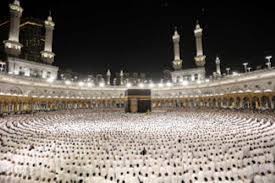… Hajj’ll not fall in summer untill 2050 –NCM
Deputy Emir of the Makkah Region, Prince Saud bin Mishaal, yesterday announced the successful completion of Hajj 1446. He also hinted that the celebration was incident-free in terms of security, health, and services. Mishaal said over 1.6 million pilgrims participated in the holy pilgrimage, with 1,506,576 pilgrims arriving from outside the Kingdom.
On the heels of this, the Spokesman for the National Centre for Meteorology (NCM), Hussein Al Qahtani, yesterday said this year’s Hajj season marks the end of the Hajj season coinciding with the summer months. Speaking further, Mishaal said 166,654 domestic pilgrims, comprising Saudi citizens and residents.
He said: “Total pilgrims1,673,230, including 877,841 male pilgrims and 795,389 female pilgrims.” The prince extended congratulations to the Custodian of the two Holy Mosques King Salman bin Abdulaziz and Crown Prince Mohammed bin Salman for their role in ensuring the pilgrims’ safety and peace.
He also praised the pilgrims’ cooperation and compliance with regulations, which contributed to the season’s success. Mishaal added: “The pilgrims performed their rites in safety and peace, thanks to the distinguished execution of operational plans by the Kingdom’s leadership.
“The Hajj season was free of any major security, health, or servicerelated incidents.” He said preparations for the next Hajj season would begin immediately, with the Kingdom’s leadership, government, and people taking pride in serving the holy sites and visitors.
Mishaal extended congratulations to King Salman bin Abdulaziz and Crown Prince Mohammed bin Salman for their role in ensuring the pilgrims’ safety and peace.
Meanwhile, Al Qahtani has said in 2026, the annual Islamic pilgrimage will gradually move into milder seasons — spring, winter, and autumn — offering cooler conditions for millions of worshippers each year.
The spokesman noted that the next eight Hajj seasons will occur during spring, followed by eight more in winter, then in autumn with gradually rising temperatures, before returning to summer after approximately 25 years.
The NCM spokesperson cited that this shift is due to the lunar calendar cycle, which offers pilgrims the opportunity to perform Hajj rituals in more moderate weather conditions during the coming years.
NCM has released a 25-year Hajj calendar outlining how the pilgrimage dates, based on the Hijri (Islamic) calendar, will align with the Gregorian calendar seasons through to 2050. Due to the lunar nature of the Hijri calendar, which is approximately 11 days shorter than the Gregorian year, the Hajj shifts earlier each year.
He said pilgrims performing Hajj will not experience the searing heat of summer again for another quarter of a century. Al Qhatani said pilgrims will benefit from increasingly favourable weather conditions until the pilgrimage eventually returns to the summer months in 2050.















